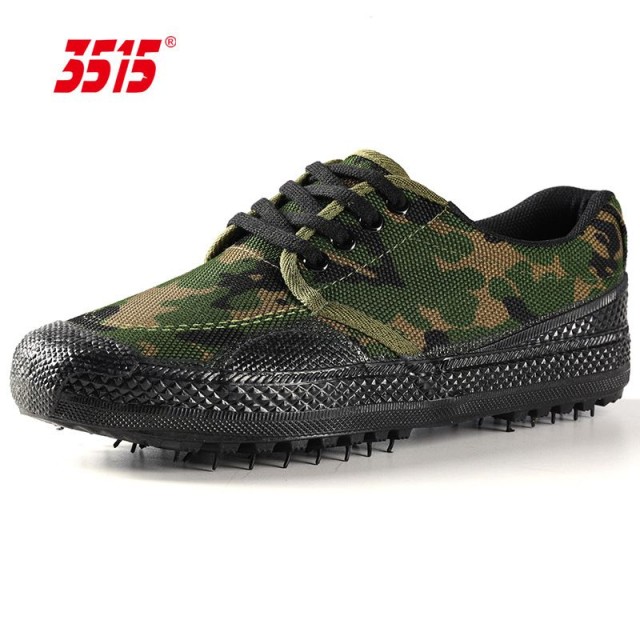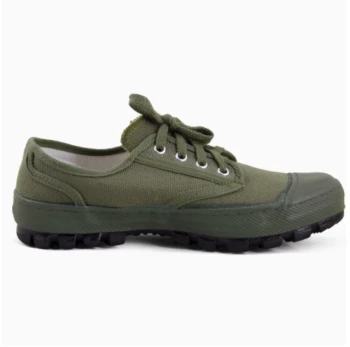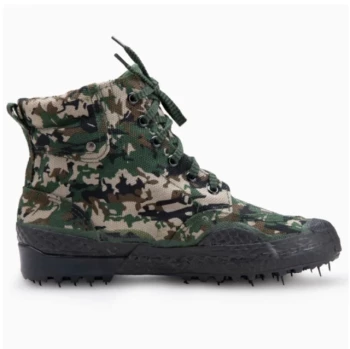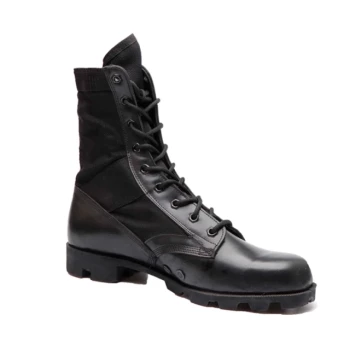For footwear buyers seeking long-lasting performance, vulcanized construction offers scientifically proven advantages over traditional methods. This deep dive reveals why heat-bonded soles dominate in demanding scenarios—from skate parks to industrial worksites—and how they achieve superior longevity through molecular-level engineering.
The Science Behind Vulcanized Shoe Construction
Heat Bonding vs. Traditional Adhesives: A Molecular Perspective
Vulcanization transforms rubber compounds at the atomic level. Where cemented shoes rely on glue layers vulnerable to delamination, vulcanized soles fuse materials through sulfur-based crosslinking under heat. Research shows this creates:
- 3D Molecular Networks: Heat-activated sulfur bridges form elastic yet unbreakable bonds between rubber polymers, resisting separation under repeated stress.
- Eliminated Weak Points: Unlike adhesive layers that degrade with moisture or flexing, vulcanized bonds distribute forces evenly across the entire sole.
Foxing Tape’s Hidden Role in Stress Distribution
The iconic wraparound foxing strip isn’t just aesthetic. It acts as a tensile reinforcement system:
- Lateral Support: By encircling the shoe’s perimeter, it prevents sidewall blowouts during sharp turns—a common failure point in skateboarding shoes.
- Impact Diffusion: Pressure from heel strikes travels along the tape’s curvature rather than concentrating at the sole’s center, reducing midsole compression over time.
From Factory to Foot: Performance Advantages
Skateboarding Case Study: Impact Absorption and Board Feel
Pro skaters prioritize vulcanized designs not just for tradition but measurable performance:
- Flexibility Precision: The thinner, heat-bonded sole allows micro-adjustments during tricks, while still offering enough cushioning for stair-set drops.
- Wear Patterns: Cemented soles often separate at the toe cap after ~6 months of ollies; vulcanized counterparts maintain integrity for over a year under equivalent abuse.
Longevity Metrics: How Vulcanized Shoes Outlast Cemented Alternatives
Independent tests comparing construction methods reveal:
- Abrasion Resistance: Vulcanized outsoles retain ~30% more thickness after 500 miles of simulated wear due to their homogeneous rubber composition.
- Cost-Per-Mile: While initial prices are comparable, vulcanized shoes’ extended lifespan makes them ~40% cheaper over three years of daily use.
Ready to stock footwear that balances performance and durability? 3515’s vulcanized shoe line combines proven construction methods with industrial-grade materials—ideal for distributors supplying athletes, workers, and outdoor enthusiasts. [Contact our team] to discuss bulk solutions tailored to your clients’ needs.
Related Products
- Durable Rubber Sole Outdoor Shoes Wholesale & Custom Manufacturing
- Durable Rubber-Soled Utility Shoes for Wholesale & Custom Brand Manufacturing
- Durable Canvas Work Shoes with Rubber Lug Sole | Wholesale Manufacturer
- Wholesale Durable Camo Canvas Shoes with High-Traction Rubber Soles
- Wholesale High-Traction Camo Boots - Custom Manufacturer for Brands
Related Articles
- Vulcanized Shoes Decoded: When They Shine and When to Choose Alternatives
- How Vulcanized Soles Became the Unsung Hero of Urban Footwear Culture
- How Vulcanized Rubber Engineering Creates Unbeatable Outdoor Boots
- Optimizing Vamp Production for Vulcanized Shoes: Materials, Techniques, and Quality Assurance
- How Vulcanized Rubber Work Boots Outlast Alternatives – And When to Choose Differently



















